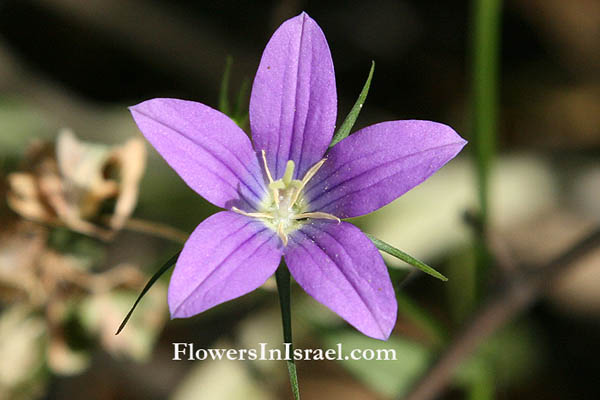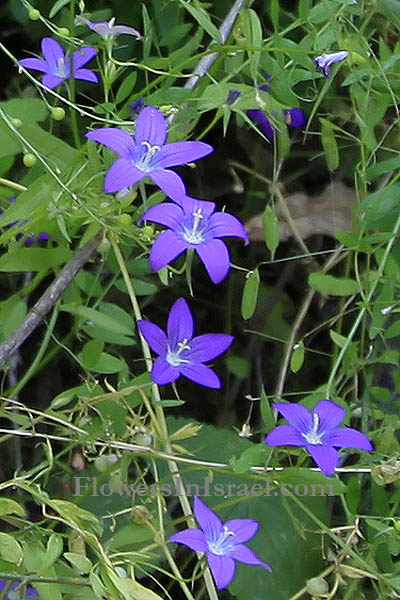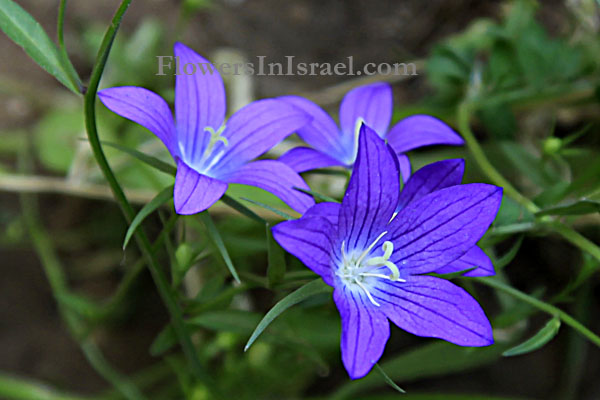Campanula dissoluta, Bellflower, Backwards harebell
Hebrew: פעמונית משוננת, Arabic: Jurays munqaleb
| Scientific name: | Campanula retrorsa Labill. | |
| Synonym name: | Campanula scabrida Hochst., Campanula adhaerens Ehrenb. ex Boiss., Campanula dissoluta Schott & Kotschy ex Boiss. | |
| Common name: | Bellflower, Backwards harebell | |
| Hebrew name: | פעמונית משוננת | |
| Arabic name: | Jurays munqaleb | |
| Plant Family: | Campanulaceae, פעמוניתיים |

|
| Life form: | Annual | |
| Stems: | Erect trailing or decumbent, glabrous, pubescent, or hirsute | |
| Leaves: | Alternate | |
| Flowers: | Purple | |
| Fruits / pods: | Capsule, elongated to ovoid, obovoid or round, with membran¬ous walls; dehiscence by irregular pores at the bases or the sides;Seeds minute, numerous | |
| Flowering Period: | March, April, May | |
| Habitat: | Humid habitats | |
| Distribution: | Mediterranean Woodlands and Shrublands, Semi-steppe shrublands | |
| Chorotype: | Mediterranean | |
| Summer shedding: | Ephemeral |

Derivation of the botanical name: Campanula, campana campan, "bell" (church); Campanula (bell) shaped. retrorsa, retro, "backwards"; retrorsus means turned backwards. The Hebrew name: pa'amonit, פעמונית, from pa'amon, פעמון, bell. The flowers look like bells.

|